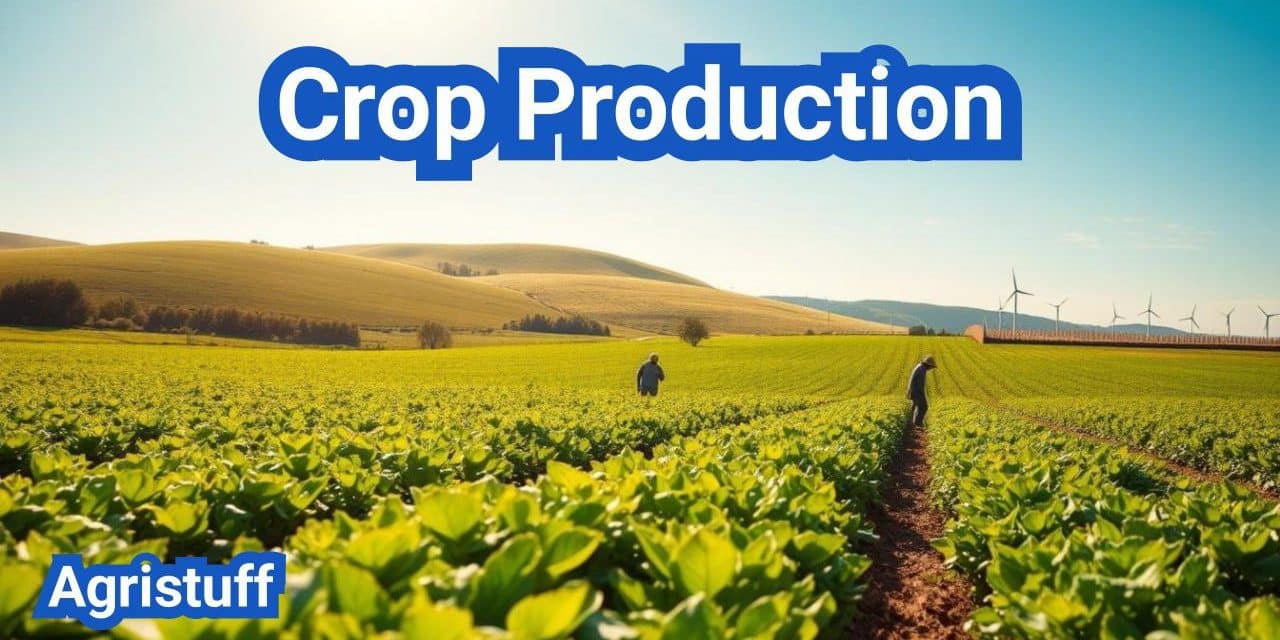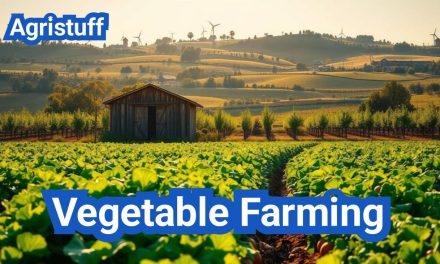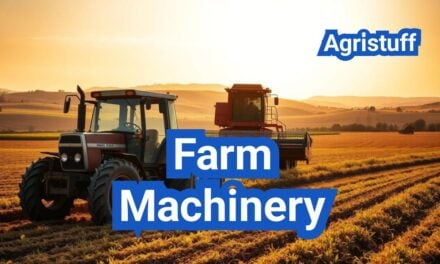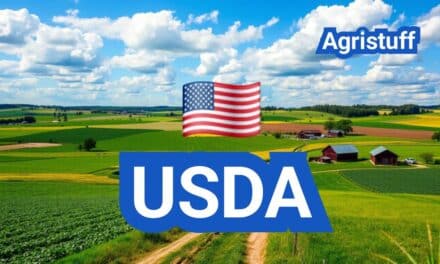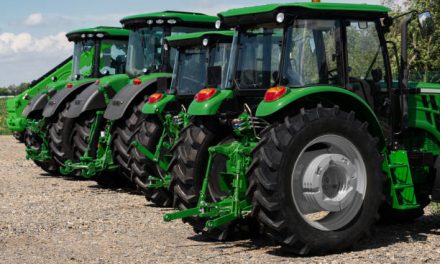Crop production is a vital component of agriculture, playing a crucial role in global food security and the economy. It involves the cultivation of crops for food, fiber, and other products.
The significance of agriculture production cannot be overstated, as it provides the foundation for food systems worldwide. Modern farming techniques have transformed the industry, enabling farmers to increase yields and reduce environmental impact.
Sustainable crop production practices are becoming increasingly important, as they help maintain soil health, conserve water, and reduce the use of chemical pesticides and fertilizers.
Key Takeaways
- Crop production is essential for global food security.
- Modern farming techniques have improved agriculture production.
- Sustainable practices are crucial for the future of crop farming.
- Crop rotation and soil health are vital for sustainable crop production.
- Efficient water use is critical in agriculture production.
Understanding Crop Production Fundamentals
Understanding the basics of crop production is key to appreciating its impact on food availability and the economy. Crop production involves a series of processes including preparing the soil, sowing seeds, irrigating, and harvesting crops. It is a vital component of agriculture, which is fundamental to the well-being of societies worldwide.
Crop production is not just about growing crops; it’s about doing so efficiently and sustainably to meet the demands of a growing global population. The scope of crop production is broad, encompassing various types of crops, farming practices, and geographical regions.
Definition and Scope of Crop Production
Crop production refers to the process of growing crops for food, fiber, and other products. It involves a range of activities from soil preparation and planting to irrigation, pest management, and harvesting. The scope of crop production is vast, covering different farming systems, crop types, and agro-ecological zones.
The definition of crop production highlights its importance in providing the basic necessities of life. It is the foundation upon which food security is built, ensuring that populations have access to sufficient, safe, and nutritious food.
The Role of Crop Production in Global Food Security
Crop production plays a critical role in global food security. It is the primary source of food for humans and animals, making it indispensable for survival. Ensuring that crop production is efficient, resilient, and sustainable is crucial for meeting the world’s food needs, particularly in the face of challenges like climate change and population growth.
By adopting best practices and innovative technologies, farmers can improve crop yields, reduce losses, and contribute to food security. This not only benefits local communities but also has a positive impact on global food availability.
Economic Significance of Agriculture
Agriculture, of which crop production is a significant part, is a major contributor to the economy in many countries. It provides employment, income, and livelihoods for millions of people around the world. The economic significance of agriculture extends beyond the farm, supporting industries such as food processing, manufacturing, and services.
Crop production also contributes to the economy through the sale of crops, both domestically and internationally. The revenue generated from crop sales can have a multiplier effect, stimulating economic growth and development.
The History and Evolution of Crop Production

From ancient farming practices to modern agriculture, crop production has evolved remarkably over time. This evolution is marked by significant advancements in farming techniques and technology, transforming the way crops are grown and harvested.
From Ancient Farming to Modern Agriculture
The history of crop production dates back to ancient times when farming was first practiced. Early farmers relied on simple tools and techniques, often depending on manual labor and natural rainfall. As civilizations developed, so did farming practices, with innovations such as irrigation systems and crop rotation becoming more prevalent.
The transition to modern agriculture has been characterized by the adoption of mechanized farming equipment, the use of synthetic fertilizers and pesticides, and the development of high-yielding crop varieties. These advancements have significantly increased crop yields and improved food security worldwide.
Technological Advancements in Farming
Technological advancements have played a crucial role in the evolution of crop production. The introduction of precision agriculture, which involves the use of GPS, drones, and satellite imaging, has enabled farmers to optimize crop management, reduce waste, and improve productivity.
Furthermore, advancements in biotechnology have led to the development of genetically modified crops that are resistant to pests and diseases, and can thrive in challenging environmental conditions. These innovations have not only improved crop yields but also contributed to more sustainable farming practices.
The integration of technology in farming has also facilitated better decision-making through data analysis, enabling farmers to respond more effectively to changes in weather patterns, soil health, and market demands.
Types of Crop Production Systems
Understanding the different types of crop production systems is crucial for optimizing crop yields and ensuring sustainability. Crop production systems vary widely and are influenced by factors such as climate, soil type, and market demand.
Conventional Farming Systems
Conventional farming systems are the most widely practiced globally. These systems rely heavily on synthetic fertilizers, pesticides, and machinery to maximize yields. Conventional farming is known for its high productivity, but it also faces criticism for its environmental impact, including soil degradation and water pollution.
Organic Farming Systems
Organic farming systems, on the other hand, avoid the use of synthetic inputs, focusing instead on natural methods to control pests and diseases and improve soil fertility. Organic farming is considered more environmentally friendly, promoting biodiversity and soil health. However, it often results in lower yields compared to conventional farming.
Integrated Farming Systems
Integrated farming systems combine elements of both conventional and organic farming practices. These systems aim to achieve a balance between productivity and environmental sustainability. By integrating different farming practices, farmers can reduce their reliance on synthetic inputs while maintaining high yields.
Mono Crop vs. Diverse Cropping
The decision between mono cropping and diverse cropping is another critical aspect of crop production systems. Mono cropping involves growing a single crop on a given area of land, while diverse cropping involves growing multiple crops. Diverse cropping can enhance biodiversity, improve soil health, and reduce the risk of crop failure.
| Cropping System | Characteristics | Advantages | Disadvantages |
|---|---|---|---|
| Conventional Farming | High use of synthetic fertilizers and pesticides | High yields, efficient use of machinery | Environmental degradation, soil erosion |
| Organic Farming | No synthetic inputs, natural pest control | Environmentally friendly, promotes biodiversity | Lower yields, higher labor costs |
| Integrated Farming | Combination of conventional and organic practices | Balances productivity and sustainability | Requires careful planning and management |
| Mono Cropping | Single crop on a given land area | Simplified management, specialized equipment | Soil degradation, increased pest and disease risk |
| Diverse Cropping | Multiple crops on a given land area | Enhanced biodiversity, improved soil health | More complex management, potential for lower yields of individual crops |
In conclusion, the choice of crop production system depends on various factors, including environmental considerations, market demand, and the farmer’s resources and expertise. By understanding the different types of crop production systems, farmers and policymakers can make informed decisions to promote sustainable agriculture.
Essential Factors for Successful Crop Production

The success of crop production depends on a combination of critical factors. Understanding and managing these elements effectively is crucial for maximizing yields and ensuring the sustainability of agricultural practices.
Climate and Weather Patterns
Climate and weather patterns play a significant role in determining the success of crop production. Different crops have specific climate requirements, and weather conditions such as temperature, rainfall, and sunlight exposure can significantly impact crop growth and development. For instance, crops like corn and soybeans thrive in temperate climates with adequate rainfall, while crops like wheat and barley are more tolerant of drier conditions.
Soil Quality and Fertility Management
Soil quality and fertility are fundamental to crop production. Soil provides the necessary nutrients, water, and support for root growth. Effective soil fertility management involves testing soil to determine its nutrient content, pH level, and structure, and then applying appropriate fertilizers and amendments to optimize soil health.
| Soil Parameter | Optimal Range | Impact on Crops |
|---|---|---|
| pH Level | 6.0-7.0 | Affects nutrient availability and microbial activity |
| Nitrogen Content | 100-200 ppm | Essential for leaf growth and development |
| Phosphorus Content | 20-50 ppm | Critical for root development and flowering |
Water Availability and Irrigation Techniques
Adequate water supply is vital for crop growth, and irrigation techniques play a crucial role in managing water resources. Efficient irrigation systems, such as drip irrigation and sprinkler systems, help conserve water while ensuring that crops receive the moisture they need.
Efficient Irrigation Techniques:
- Drip Irrigation: Delivers water directly to the roots, reducing evaporation and runoff.
- Sprinkler Systems: Covers larger areas and can be adjusted for different crop needs.
Pest and Disease Management Strategies
Effective pest and disease management is critical for protecting crops and ensuring high yields. Strategies include using resistant crop varieties, practicing crop rotation, and applying integrated pest management (IPM) techniques that combine physical, cultural, biological, and chemical controls.
Integrated Pest Management (IPM) involves a holistic approach to managing pests and diseases, minimizing the use of chemical pesticides, and promoting ecological balance.
Grain Crop Production Techniques
Grain crop production techniques have evolved significantly, incorporating advanced methods to improve crop yields and resilience. Grain crops such as corn, wheat, and rice are staples worldwide, and their production involves a range of techniques.
Corn Production: From Seed Selection to Harvest
Corn production is a complex process that begins with seed selection. Farmers must choose high-quality seeds that are resistant to pests and diseases and suitable for their local climate. Seed selection is critical for achieving high yields.
The next step involves preparing the soil, which includes tilling and applying fertilizers as needed. Corn requires adequate nutrients, particularly nitrogen, phosphorus, and potassium. Precision agriculture techniques can help optimize fertilizer application, reducing waste and environmental impact.
- Choose high-quality seeds suitable for the local climate.
- Prepare the soil through tilling and fertilization.
- Monitor crop health and apply pest and disease management as needed.
Wheat Cultivation Methods
Wheat is another crucial grain crop, with various cultivation methods employed depending on the region and climate. Wheat cultivation involves preparing the soil, planting seeds at the right time, and managing the crop through to harvest.
One key aspect of wheat cultivation is crop rotation. Rotating wheat with other crops can help maintain soil fertility and reduce the risk of pests and diseases. Farmers may also use conservation tillage to minimize soil erosion.
- Prepare the soil for wheat cultivation.
- Plant seeds at the optimal time for the specific region.
- Implement crop rotation and conservation tillage practices.
Rice Cultivation in Various Environments
Rice is a staple food for more than half of the world’s population, and its cultivation varies significantly depending on the environment. Rice can be grown in a range of conditions, from flooded paddies to dryland fields.
Flooded rice cultivation is common in many parts of Asia, where water is abundant. This method involves flooding the fields to control weeds and improve soil conditions. In contrast, dryland rice cultivation relies on rainfall and irrigation.
Milo and Other Grain Sorghums
Milo, also known as grain sorghum, is a drought-tolerant crop that is important in regions with limited water resources. Grain sorghum is used for food, animal feed, and biofuel production.
Grain sorghum production involves selecting varieties that are suitable for the local climate and soil conditions. Farmers must also manage pests and diseases, which can be challenging in sorghum crops.
The use of resistant varieties and integrated pest management techniques can help mitigate these challenges and improve yields.
Oilseed and Fiber Crop Farming

Oilseed and fiber crops play a pivotal role in agricultural systems, contributing to food security, economic development, and sustainable practices. These crops are fundamental to various industries, including food production, biofuels, and textiles.
Soybean Cultivation Techniques
Soybean is one of the most significant oilseed crops globally, used for both food and industrial products. Effective soybean cultivation involves selecting the right variety for the specific climate and soil type, ensuring proper soil preparation, and implementing optimal planting and harvesting techniques.
Key practices in soybean cultivation include crop rotation to maintain soil health, precise irrigation management, and the use of technology for monitoring crop health and yield prediction.
Cotton Farming and Harvesting
Cotton is a major fiber crop that is cultivated in many parts of the world. Successful cotton farming requires careful planning, from selecting disease-resistant varieties to implementing efficient irrigation systems.
Harvesting techniques for cotton have evolved, with mechanical harvesting being the most common method used today. This method improves efficiency and reduces labor costs, contributing to the economic viability of cotton farming.
Other Commercial Oilseed Crops
Apart from soybeans, other significant oilseed crops include sunflowers, rapeseed (canola), and peanuts. Each of these crops has its unique cultivation requirements and market demands.
- Sunflower cultivation is known for its drought tolerance, making it suitable for areas with limited water resources.
- Rapeseed is valued for its oil, which is used in cooking and as a biofuel.
- Peanuts are not only a source of oil but also a nutritious food product.
These crops contribute to the diversity of oilseed production, offering farmers various options based on their regional conditions and market opportunities.
Root and Tuber Crop Production

Root and tuber crops, such as potatoes, sweet potatoes, and carrots, are crucial for sustainable agriculture. These crops are not only rich in nutrients but also play a significant role in food security and the agricultural economy.
Potato Farming: Site Selection to Storage
Potato farming is a complex process that begins with site selection. Farmers must choose land with suitable soil conditions and adequate moisture. Soil preparation is critical, involving tillage and the addition of organic matter to improve soil fertility.
The cultivation of potatoes requires careful management of pest and disease. Techniques such as crop rotation and the use of resistant varieties can help mitigate these challenges.
| Aspect | Considerations |
|---|---|
| Site Selection | Soil type, drainage, and sunlight exposure |
| Soil Preparation | Tillage, organic matter addition |
| Pest and Disease Management | Crop rotation, resistant varieties |
Sweet Potato Cultivation and Harvest
Sweet potato cultivation involves slip production, where slips are grown from mature sweet potatoes. These slips are then transplanted to the field.
Irrigation management is crucial for sweet potatoes, especially during the initial growth stages. Drip irrigation can be an effective method to conserve water.
Carrot Cultivation Best Practices
Carrot cultivation requires precise soil preparation, including the removal of stones and debris to prevent forking. Sowing seeds at the correct depth and spacing is also vital.
Weed control is another important aspect of carrot cultivation. Techniques such as mulching and hand weeding can help manage weeds effectively.
Vegetable Crop Production

Vegetable crop production is a vital component of global food systems, providing essential nutrients and contributing to food security. The cultivation of vegetables involves a range of practices and techniques that vary depending on the type of crop, climate, and regional conditions.
Tomato Production Strategies
Tomato production is one of the most significant aspects of vegetable crop production worldwide. Effective strategies for tomato cultivation include selecting disease-resistant varieties, implementing proper irrigation systems, and using integrated pest management techniques. Tomatoes require well-drained soil and full sun, making soil preparation and crop rotation crucial for optimal yield.
Key factors in tomato production:
- Soil quality and fertility management
- Precision irrigation techniques
- Pest and disease management
- Support systems for indeterminate varieties
Planting and Growing Sweet Corn
Sweet corn is another popular vegetable crop that requires specific conditions for optimal growth. It thrives in well-drained, fertile soil and full sun. Planting sweet corn in blocks rather than rows can improve pollination and ear quality. Regular watering and fertilization are also critical for achieving high yields.
Tips for growing sweet corn:
- Choose a sunny location with good air circulation
- Plant seeds 1 inch deep and 6-8 inches apart
- Apply nitrogen-rich fertilizer during the growing season
- Monitor for pests and diseases regularly
Cabbage and Leafy Vegetable Farming
Cabbage and other leafy vegetables are cool-season crops that prefer cooler temperatures and consistent moisture. Crop rotation and soil health management are vital for preventing diseases and ensuring healthy growth. Using resistant varieties and practicing good sanitation can also help in managing pests and diseases.
| Crop | Preferred Soil Type | Irrigation Needs |
|---|---|---|
| Cabbage | Well-drained, fertile soil | Consistent moisture |
| Leafy Greens | Loamy soil with organic matter | Adequate moisture, avoid waterlogging |
Perennial Vegetables Management
Perennial vegetables, such as asparagus and rhubarb, require long-term management strategies. These crops benefit from mulching, regular fertilization, and careful harvesting practices to ensure sustainability and high productivity. Understanding the specific needs of each perennial vegetable is crucial for successful cultivation.
By adopting these strategies and understanding the specific needs of various vegetable crops, farmers and gardeners can improve their yields and contribute to a more sustainable food system.
Fruit and Specialty Crop Production

Fruit crop production, including grapes, tree fruits, and berries, requires specific techniques and management practices to ensure high yields and quality. These crops are not only a significant source of nutrition but also contribute substantially to the agricultural economy.
Grape Cultivation Techniques
Grape cultivation is a complex process that involves careful planning and precise management. Factors such as soil quality, climate, and irrigation systems play a crucial role in determining the quality and quantity of the grape yield.
Key Practices in Grape Cultivation:
- Soil preparation and management
- Vineyard layout and planting density
- Irrigation and water management
- Pest and disease management
Tree Fruit Production Systems
Tree fruit production involves the cultivation of fruits such as apples, pears, and peaches. Modern tree fruit production systems emphasize efficiency, sustainability, and quality.
Tree Fruit Production Techniques:
| Crop | Planting Density | Irrigation Method |
|---|---|---|
| Apples | High density | Drip irrigation |
| Pears | Medium density | Micro-sprinkler |
| Peaches | Low density | Flood irrigation |
Berry Crop Management
Berry crops, including strawberries, blueberries, and raspberries, require specific management practices to optimize yields and quality. Effective management involves a combination of traditional techniques and modern technologies.
Best Practices for Berry Crop Management:
- Soil health management
- Precision irrigation
- Pest and disease monitoring
- Harvest timing and handling
Implementing Effective Crop Rotation Methods

Implementing effective crop rotation methods is crucial for maintaining soil health, reducing pests and diseases, and increasing crop yields. Crop rotation is a farming practice that involves rotating different crops on the same land to avoid depleting the soil of nutrients and to reduce the buildup of pests and diseases.
Benefits of Crop Rotation
Crop rotation offers numerous benefits, including improved soil fertility, increased crop yields, and reduced environmental impact. By rotating crops, farmers can break disease and pest cycles, improve soil structure, and enhance biodiversity.
Key benefits of crop rotation include:
- Increased crop yields due to improved soil fertility
- Reduced pest and disease pressure
- Enhanced soil structure and biodiversity
- Improved water retention and reduced erosion
Planning Seasonal Rotations
Planning seasonal rotations requires careful consideration of the crops to be rotated, their growth patterns, and the soil conditions. Farmers should consider factors such as climate, soil type, and market demand when planning their crop rotations.
Effective seasonal rotation planning involves:
- Assessing soil conditions and selecting appropriate crops
- Creating a rotation plan that balances crop demands with soil health
- Monitoring and adjusting the rotation plan as needed
Cover Crops for Soil Health
Cover crops play a crucial role in maintaining soil health by reducing erosion, improving soil structure, and providing nutrients. Legumes, grasses, and other cover crops can be used to improve soil fertility and overall health.
Benefits of cover crops include:
- Reduced soil erosion
- Improved soil structure and fertility
- Enhanced biodiversity
Row Crop Rotation Strategies
Row crop rotation involves rotating different row crops, such as corn and soybeans, to improve soil health and reduce pests and diseases. Effective row crop rotation strategies can help farmers maintain soil productivity and reduce environmental impact.
Key considerations for row crop rotation include:
- Selecting crops that complement each other in terms of growth patterns and nutrient demands
- Planning rotations to minimize pest and disease buildup
- Monitoring soil health and adjusting rotations as needed
Sustainable Crop Production Practices

As the global population grows, sustainable crop production practices are more important than ever. The need to produce food in a way that is environmentally friendly, socially responsible, and economically viable has become a priority in the agricultural sector.
Organic Crop Farming Methods
Organic farming is a key component of sustainable crop production. It involves growing crops without the use of synthetic fertilizers, pesticides, or genetically modified organisms (GMOs). Organic farming methods promote soil health, biodiversity, and efficient water use. By adopting organic practices, farmers can reduce their environmental footprint while producing high-quality crops.
The benefits of organic farming include improved soil fertility, reduced chemical runoff, and increased crop resilience to pests and diseases. Organic farming systems also tend to have higher biodiversity, as they often incorporate crop rotation and intercropping practices.
Reduced Tillage Approaches
Reduced tillage is another important strategy for sustainable crop production. This approach minimizes the disturbance of soil through reduced or no-till farming practices. Reduced tillage helps preserve soil organic matter, reduce erosion, and promote soil biota.
By reducing tillage, farmers can also decrease their fuel consumption and lower emissions. Additionally, reduced tillage can lead to improved soil water retention, reducing the need for irrigation.
Water Conservation Techniques
Water conservation is critical in sustainable crop production, especially in areas prone to drought. Techniques such as drip irrigation, mulching, and cover cropping can significantly reduce water usage. Drip irrigation delivers water directly to the roots of plants, minimizing evaporation and runoff.
Other water-saving strategies include using drought-tolerant crop varieties and implementing conservation agriculture practices. These methods help maintain soil moisture, reduce water waste, and ensure that crops receive the water they need to thrive.
Soil Health Management
Soil health is the foundation of sustainable crop production. Practices that promote soil health include adding organic amendments, using cover crops, and implementing crop rotation. Soil health management involves monitoring soil condition and adjusting farming practices accordingly.
Healthy soils are more productive, support biodiversity, and are more resilient to climate change. By prioritizing soil health, farmers can improve crop yields, reduce the need for external inputs, and contribute to a more sustainable agricultural system.
Modern Crop Production Technologies

The landscape of crop production is being reshaped by modern technologies that offer precision and sustainability. These advancements are crucial in meeting the world’s growing food demands while minimizing environmental impact.
Precision Agriculture Systems
Precision agriculture involves the use of technology to optimize crop yields and reduce waste. Techniques include GPS-guided farming equipment, soil sensors, and drones for crop monitoring. Precision agriculture systems enable farmers to make data-driven decisions, improving efficiency and productivity.
Smart Farming Tools
Smart farming tools integrate technology into farming practices, enhancing crop management. These tools include automated irrigation systems, crop monitoring software, and livestock monitoring devices. By leveraging smart farming tools, farmers can respond quickly to changes in crop conditions, reducing losses and improving yields.
Data-Driven Crop Management
Data-driven crop management involves the collection and analysis of data to inform farming decisions. This approach includes analyzing weather patterns, soil health, and crop growth. By using data analytics, farmers can predict potential issues, optimize inputs, and maximize yields.
Agricultural Biotechnology Applications
Agricultural biotechnology involves the use of scientific techniques to improve crop yields and disease resistance. Applications include genetically modified crops, gene editing, and synthetic biology. Agricultural biotechnology has the potential to address some of the world’s most pressing food security challenges.
In conclusion, modern crop production technologies are transforming the agricultural landscape. By embracing precision agriculture, smart farming tools, data-driven management, and agricultural biotechnology, farmers can improve yields, reduce environmental impact, and contribute to global food security.
Climate-Smart Agriculture for Resilient Crop Production
As the world grapples with the challenges of climate change, climate-smart agriculture emerges as a vital strategy for ensuring resilient crop production. This approach integrates practices, policies, and technologies that aim to enhance agricultural productivity, improve farmers’ resilience to climate change, and reduce greenhouse gas emissions from agricultural activities.
Adapting Farming Practices to Climate Change
Adapting farming practices to the impacts of climate change is crucial for maintaining crop yields and ensuring food security. This involves implementing strategies such as:
- Using climate-resilient crop and animal varieties
- Implementing conservation agriculture practices
- Improving soil health through organic amendments
- Enhancing water management through efficient irrigation systems
According to the Food and Agriculture Organization (FAO), “Climate-smart agriculture aims to achieve food security and broader development goals under a changing climate, and it does so by promoting the integration of climate change into agricultural policies, programs, and investments.”
“The challenge is not just to produce more food, but to produce it in a way that is sustainable and resilient to the impacts of climate change.”
— FAO Statement on Climate-Smart Agriculture
Reducing Agricultural Emissions
Agriculture is a significant contributor to greenhouse gas emissions, primarily through the release of nitrous oxide and methane. Reducing these emissions is essential for mitigating climate change. Strategies for reducing agricultural emissions include:
- Improving fertilizer use efficiency
- Implementing agroforestry practices
- Using manure management systems
- Promoting the use of renewable energy in farming operations
| Strategy | Description | Potential Impact |
|---|---|---|
| Improved Fertilizer Use | Optimizing fertilizer application rates and timing | Reduced N2O emissions |
| Agroforestry | Integrating trees into farming systems | Carbon sequestration, biodiversity enhancement |
Building Weather-Resilient Farming Systems
Building resilience to extreme weather events is critical for sustainable crop production. This can be achieved through practices such as:
- Implementing soil conservation measures
- Using drought-tolerant crop varieties
- Enhancing water harvesting and storage
- Promoting agro-insurance programs
By adopting these climate-smart agriculture practices, farmers can improve their resilience to climate change, reduce their environmental footprint, and contribute to global food security.
Maximizing Crop Yield and Quality
The pursuit of maximizing crop yield and quality drives innovation in agricultural practices. Farmers and agricultural scientists continually seek methods to enhance productivity while maintaining the quality of crops. This involves a multifaceted approach, including scientific soil fertility management, optimizing planting and harvesting timing, utilizing high-yield crop varieties, and implementing strategies for achieving bumper crops.
Scientific Soil Fertility Management
Soil fertility is a critical factor in crop production. Scientific soil fertility management involves testing soil to determine its nutrient content and pH level, then applying the appropriate fertilizers and amendments to optimize soil health. This approach not only enhances crop yield but also reduces the environmental impact of farming by minimizing the overuse of fertilizers.
| Soil Test Parameter | Optimal Range | Action if Out of Range |
|---|---|---|
| pH Level | 6.0-7.0 | Apply lime to raise pH or sulfur to lower it |
| Nitrogen (N) | 50-100 ppm | Apply nitrogen-based fertilizers |
| Phosphorus (P) | 20-50 ppm | Apply phosphorus-based fertilizers |
Optimizing Planting and Harvesting Timing
The timing of planting and harvesting significantly affects crop yield and quality. Optimizing these timings based on weather patterns, soil conditions, and crop maturity can lead to better outcomes. For instance, planting too early or too late in the season can expose crops to adverse weather conditions.
High-Yield Crop Varieties
Using high-yield crop varieties is another strategy for maximizing crop yield. These varieties are bred for their ability to produce more grain or biomass per unit area. They often possess traits that make them more resistant to pests and diseases, further enhancing their yield potential.
Bumper Crop Achievement Strategies
Achieving a bumper crop requires a combination of good agricultural practices, including proper soil management, efficient irrigation systems, and effective pest and disease management. Farmers can also benefit from using crop rotation and cover cropping to enhance soil health and reduce erosion.
| Strategy | Description | Benefit |
|---|---|---|
| Crop Rotation | Rotating crops to avoid depleting soil nutrients | Improved soil fertility and structure |
| Cover Cropping | Planting crops between crop cycles to protect soil | Reduced soil erosion and improved soil health |
| Efficient Irrigation | Using irrigation systems that minimize water waste | Conserved water resources and reduced water cost |
The Business of Crop Production
Crop production involves not just growing crops, but also navigating the complex business landscape of agriculture. Farmers must make informed decisions about their crops, taking into account various factors that affect their business.
Market Considerations for Cash Crops
Understanding market trends is crucial for farmers to maximize their profits from cash crops. Market considerations include demand and supply dynamics, pricing, and competition. Farmers need to stay informed about the current market conditions to decide which crops to plant and when to harvest them.
For instance, the demand for certain crops like corn and soybeans can fluctuate based on global market trends and government policies. Farmers who are aware of these trends can adjust their production accordingly to meet the demand and secure better prices.
Risk Management Strategies
Crop production is fraught with risks, including weather-related events, pests, and diseases. Effective risk management strategies are essential to mitigate these risks. Farmers can use various techniques such as crop insurance, diversification of crops, and adoption of resilient crop varieties to manage risks.
- Crop insurance can provide financial protection against crop failure or revenue loss.
- Diversifying crops can help spread the risk across different crops.
- Using resilient crop varieties can reduce the impact of adverse weather conditions or pest infestations.
USDA Programs and Support for Farmers
The United States Department of Agriculture (USDA) offers various programs and support to farmers to help them manage their crop production businesses effectively. These programs include financial assistance, technical support, and conservation programs.
Farmers can benefit from USDA programs such as crop insurance, disaster assistance, and conservation programs that help improve soil health and reduce environmental impact. Understanding and utilizing these programs can significantly enhance the sustainability and profitability of their farming operations.
By leveraging these resources, farmers can better navigate the challenges of crop production and improve their business outcomes.
The Future of Crop Production
The future of crop production is intricately linked with the adoption of sustainable agriculture practices and modern farming techniques. As the global population continues to grow, ensuring food security while minimizing environmental impact is a significant challenge. Sustainable agriculture practices, such as crop rotation, organic farming, and reduced tillage, play a crucial role in maintaining soil health, conserving water, and reducing the use of chemical pesticides and fertilizers.
Modern farming techniques, including precision agriculture and agricultural biotechnology, are also vital in enhancing crop yields and improving resource allocation. These technologies enable farmers to make data-driven decisions, optimize crop management, and reduce waste. By embracing these innovations, the agricultural sector can increase productivity while minimizing its ecological footprint.
The integration of sustainable agriculture practices and modern farming techniques will be pivotal in shaping the future of crop production. By adopting these approaches, farmers and policymakers can work together to ensure global food security, promote environmentally friendly farming practices, and foster a more sustainable agricultural industry.
FAQ
What is crop production, and why is it important?
Crop production refers to the process of growing crops for food, fiber, and other products. It is essential for global food security, economic stability, and sustainable development.
What are the different types of crop production systems?
The main types of crop production systems are conventional farming, organic farming, and integrated farming. Each system has its unique characteristics, advantages, and challenges.
How does climate change affect crop production?
Climate change impacts crop production by altering temperature and precipitation patterns, increasing frequency of extreme weather events, and shifting pest and disease dynamics, ultimately affecting crop yields and quality.
What are the key factors for successful crop production?
The essential factors for successful crop production include suitable climate and weather conditions, good soil quality and fertility management, adequate water availability and irrigation techniques, and effective pest and disease management strategies.
How can farmers implement sustainable crop production practices?
Farmers can adopt sustainable crop production practices by using organic crop farming methods, reduced tillage approaches, water conservation techniques, and soil health management strategies, ultimately reducing environmental impact and improving crop yields.
What is the role of agricultural biotechnology in modern crop production?
Agricultural biotechnology plays a significant role in modern crop production by developing genetically modified crops with improved traits, such as pest resistance, drought tolerance, and enhanced nutritional content.
How can farmers manage risks in crop farming?
Farmers can manage risks in crop farming by adopting risk management strategies, such as crop insurance, diversification, and precision agriculture, to mitigate the impacts of weather events, pests, and diseases.
What are the benefits of crop rotation in agriculture?
Crop rotation offers several benefits, including improved soil fertility, reduced pest and disease pressure, increased crop yields, and enhanced biodiversity, ultimately contributing to sustainable agriculture and food security.
How does soil quality affect crop production?
Soil quality significantly affects crop production by influencing soil fertility, water-holding capacity, and aeration, ultimately impacting crop growth, yields, and quality.
What are the advantages of precision agriculture?
Precision agriculture offers several advantages, including improved crop yields, reduced input costs, enhanced water management, and minimized environmental impact, ultimately contributing to sustainable and efficient crop production.
How can farmers adapt to climate change?
Farmers can adapt to climate change by adopting climate-resilient practices, such as using drought-tolerant crop varieties, implementing conservation agriculture, and diversifying their farming systems to reduce vulnerability to climate-related shocks.
What is the importance of crop production in global food security?
Crop production is crucial for global food security as it provides the primary source of food for human consumption, ensuring that the world’s growing population has access to sufficient and nutritious food.
What are the economic significance of crop production?
Crop production has significant economic importance as it contributes to the national income, provides employment opportunities, and generates revenue through the sale of crops, ultimately supporting local and national economies.
How does crop production impact the environment?
Crop production can have both positive and negative impacts on the environment, depending on the farming practices used. Sustainable practices can enhance biodiversity, improve soil health, and conserve water, while intensive farming can lead to environmental degradation.
Conclusion of: Crop Production
Crop production is the heart of agriculture, encompassing the science, technology, and practices involved in growing crops to feed the world. As a core component of global food security, crop production plays a critical role in sustaining both human and animal populations. With continuous advancements in agricultural techniques and technologies, modern crop production has become more efficient and sustainable.
USDA – Crop Production Overview
What Is Crop Production?
Crop production refers to the process of cultivating plants such as grains, vegetables, fruits, and fiber crops for consumption, trade, or industrial use. It involves various stages, including land preparation, planting, irrigation, fertilization, pest management, and harvesting. Crop production can occur in open fields or controlled environments such as greenhouses.
FAO – What is Crop Production?
Major Types of Crops in Crop Production
In crop production, crops are usually classified into categories like cereals (e.g., wheat, rice), pulses (e.g., lentils, beans), fruits (e.g., apples, bananas), vegetables (e.g., tomatoes, potatoes), oilseeds (e.g., soybeans, sunflower), and fiber crops (e.g., cotton). Each type of crop requires specific climatic, soil, and water conditions for optimal growth.
National Geographic – Types of Crops
Factors Influencing Crop Production
Several factors affect crop production including climate, soil quality, availability of water, seed quality, use of fertilizers, pest control, and farming techniques. Technological innovations such as genetically modified seeds and precision farming have also enhanced crop yields and resistance to diseases.
USDA Climate Hub – Crop Production Factors
Crop Production Techniques
Crop production involves traditional and modern techniques. Traditional techniques include manual plowing and organic farming, while modern techniques involve mechanization, use of synthetic fertilizers and pesticides, and smart technologies like GPS and drones for field monitoring. Conservation agriculture and no-till farming are gaining popularity for their sustainability benefits.
AGRI Tech Tomorrow – Crop Production Technology
Importance of Crop Rotation in Crop Production
Crop rotation is a key practice in crop production that involves growing different types of crops in the same area in sequential seasons. This helps in maintaining soil fertility, reducing pest infestations, and improving crop yield. Leguminous crops in rotation fix nitrogen in the soil, enhancing the productivity of subsequent crops.
University of Minnesota Extension – Crop Rotation
Sustainable Practices in Crop Production
Sustainable crop production involves methods that protect the environment, public health, and animal welfare. These include organic farming, integrated pest management (IPM), conservation tillage, and the use of renewable energy. These practices aim to meet current food needs without compromising future generations.
UN FAO – Sustainable Crop Production
Challenges in Crop Production
Farmers face several challenges in crop production, such as climate change, water scarcity, soil degradation, pest outbreaks, and fluctuating market prices. Addressing these challenges requires resilient crop varieties, efficient irrigation systems, government policies, and access to markets and credit.
World Bank – Agricultural Challenges
Technological Innovations in Crop Production
Modern technology has revolutionized crop production. Tools like satellite imaging, drones, artificial intelligence, and precision farming tools help in better decision-making. Innovations in seed engineering, automated machinery, and farm management software enhance productivity and reduce resource use.
MIT Technology Review – AgTech Innovations
Role of Crop Production in Food Security
Crop production is directly tied to global food security. An increase in production not only feeds more people but also stabilizes economies. Countries with efficient crop production systems are more resilient to food crises and better equipped to support their populations during emergencies.
UN – Food Security and Agriculture
Final Thought
Crop production is a vital pillar of the agricultural sector and global economy. With the integration of technology and sustainable practices, the future of crop production looks promising. Emphasizing innovation, education, and global cooperation can ensure a resilient food system for generations to come.

